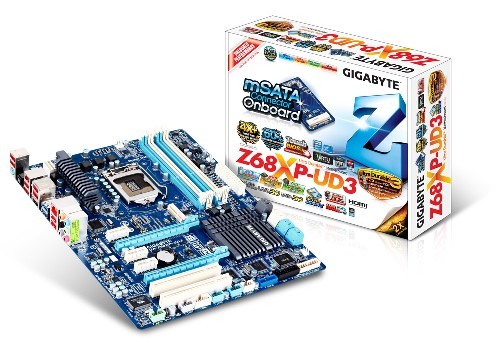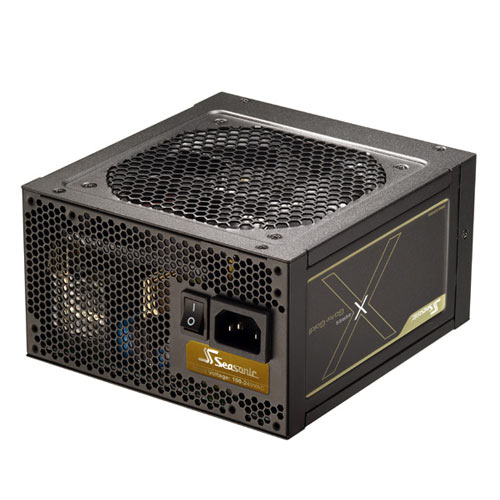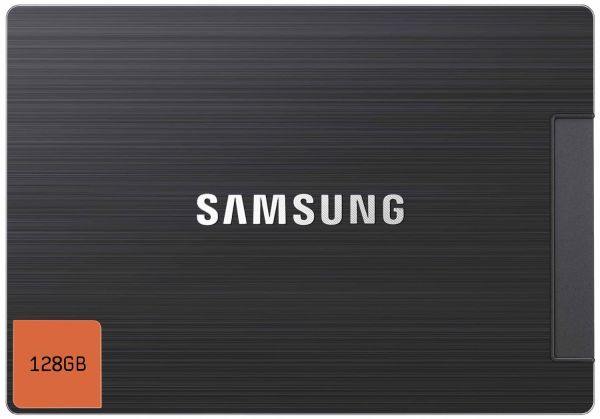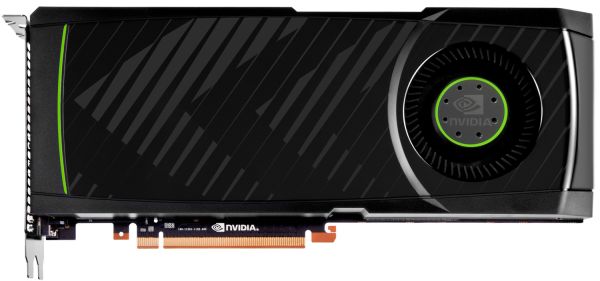Holiday 2011 Mainstream High-End Buyer's Guide
by Zach Throckmorton on December 9, 2011 12:00 AM EST- Posted in
- Guides
- AMD
- Intel
- Sandy Bridge
- CrossFire
- Sandy Bridge E
- Holiday 2011
- NVIDIA
Gamer's delight
While the HTPC on the previous page is designed for intensive video transcoding and therefore is built around a Intel Core i7-2600K with Hyper-Threading, this rig is devoted to gaming and therefore utilizes an Intel Core i5-2500K. You can see clearly from Bench that most games do not benefit from the 2600K's Hyper-Threading. Instead, it's a better idea to spend that $100 or so savings elsewhere if your primary consideration is gaming.
Because games do respond well to increased clockspeeds, and the Core i5-2500K is a multiplier unlocked CPU (so overclocking it is a breeze), we're recommending Corsair's H80 closed-loop CPU water cooler. All-in-one water-cooling kits like this Corsair are not only (generally speaking) great CPU coolers, they're also an easy introduction to more sophisticated water-cooling setups in case you're interested in exploring water-cooling at some point in the future. Jared recently reviewed the H60, H80, and H100—all of these fit in the Fractal Design Define R3 case we're recommending.

Gigabyte's GA-Z68XP-UD3 is an ATX form factor motherboard with all of the bells and whistles. It is a very capable overclocker and in my experience very reliable as well. While it's definitely not in the highest echelon of LGA 1155 motherboards, it is a solid higher-end mainstream motherboard. Perhaps of most interest to gamers, it supports both SLI and CrossFire—more on those in a moment.
Though not many current games benefit much from more than 8GB of DDR3, given the low prices of RAM and the larger budget, we're recommending two 8GB kits for 16GB total RAM. The G.SKILL Ripjaws X in the parts list below are great performers, but there are many other comparable kits.
Games don't always benefit much from an SSD, either, but again given the bigger budget, this build has a 128GB Samsung 830 Series SSD for its OS and application drive. That's enough space for plenty of both productivity and entertainment applications. I cannot stress enough how much general responsiveness and overall, day-to-day computing benefit from the addition of an SSD. Samsung's 830 Series drives are already developing a reputation for reliability, and as Anand found in his recent review, they also perform very well. In case your game—or media—library is very large (e.g. you play Rage!), the stalwart Samsung F3 1TB hard drive should be enough space for even the most prolific gamer.
The heart of any gaming rig is its GPU—or GPUs. The NVIDIA GTX 580 is the most powerful single GPU discrete video card available, and at $500, it's really pushing the envelope for "mainstream". You can see how it fares in Bench. The GTX 580 will play Crysis: Warhead at 1920x1200 resolution on gamer quality settings at an average of 60 frames per second. So, yes, it will run Crysis! But what if you're interested in SLI/CrossFire? $500 will buy one GTX 580—or two AMD Radeon HD 6950s. In general CrossFired 6950s outperform a single GTX 580, in some cases by a large margin. You can see how the two configurations compare on Bench. That said, I've yet to see a CrossFire (or SLI) setup that didn't have a few quirks—or downright aggravating issues. If you don't want to bother with SLI/CrossFire, the GTX 580 is your best bet (unless you want to plunk down even more money on a single card with dual GPUs, but I don't consider those much better than SLI/CF setups). If you are willing to put the additional time and effort into a CrossFire/SLI setup, you'll get a lot more bang for your buck with two Radeon HD 6950s.

SeaSonic's X850 is an extremely well-built 850W power supply capable of powering this impressive system whether you decide to go with a single GTX 580 or two Radeon HD 6950s. That said, the Bench test system hit 850W with two GTX 580s in SLI under Furmark—so if you plan to go with one GTX 580 initially and add a second card later, you will want to upgrade to a more powerful PSU. Finally, everything is housed in a Fractal Design Define R3. I recently recommended this case in the midrange buyer's guide and while there are other comparable cases like Corsair's 500R and Antec's P280, I like that the Fractal R3 is less expensive and, in my opinion, looks better.
| Component | Product | Price |
| CPU | Intel Core i5-2500K | $220 |
| CPU cooler | Corsair H80 | $94 |
| Motherboard | Gigabyte GA-Z68XP-UD3 ATX | $150 |
| RAM | (2) G.SKILL Ripjaws X 8GB (2x4GB) DDR3 1600 | $60 (total) |
| GPU | EVGA GeForce GTX 580 1536MB GDDR5 | $500 |
| GPU alternate | (2) XFX Radeon HD 6950 1GB GDDR5 | $500 (total) |
| SSD | Samsung 830 MZ-7PC128D/AM 128GB | $230 |
| HDD | Samsung Spinpoint F3 1TB | $150 |
| Power supply | SeaSonic X850 Gold 850W | $150 |
| Case | Fractal Design Define R3 | $110 |
| Optical drive | ASUS DRW-24B1ST/BLK/B/AS | $19 |
| Operating system | Microsoft Windows 7 Home Premium 64-bit (OEM) | $100 |
| Total: | $1783 | |
Next up, we're sacrificing graphics capability/gameplay ability for raw CPU speed. If you want an incredibly powerful computer, check the next page.












52 Comments
View All Comments
methudman6 - Friday, December 9, 2011 - link
I really like the Work PC build. I was wondering though, any reason to choose the Crucial ssd over an Intel 320 series? I know that Crucial m4 is sata III, but do you believe Crucial to be as reliable as Intel?Z Throckmorton - Friday, December 9, 2011 - link
In the absence of hard data from controlled studies, it's difficult to asses which products of any type, including SSDs, are the most reliable. We have to rely on anecdotal evidence from forums, reviews on retail sites, and coverage from recognized authorities like Anand. And sadly the plural of anecdote isn't data! That said, my personal opinion is that I would be comfortable running both M4s and 320s, as well as Samsung 830s. I have an M4 in my netbook and a 320 in my daily driver desktop, and none of my clients have experienced issues with either of these drives. FWIW.Vikendios - Friday, December 9, 2011 - link
If you are going to spend hours immersing in Skyrim, the glory of what you see comes first. A 30 inch monitor running at 2650 x 1900 with full effects is such a quantum leap from anything else that I cannot imagine calling "high end" anything without,It is precisely like building an audiophile music systems. What makes the sound ? The speakers. That's where the money should go, and all the rest is just support electronics.
Running 2650 x 1900, a single 580 is quite unsufficient. My rig has a two-chip 590 because I'm lazy at setting up SLI's or triple card systems. Where you can save is memory : 6 G is ample for most games, and SSD's. A good old harddrive will work fine, you won't see the difference.
The second most important luxury is silence, so you can enjoy perfect audio. I toyed with liquid cooling, but ended up solving radically the problem by leaving the innards in a closet on the other side of the wall from my den. Only a small hole in the wall behind my desk to thread cables for the monitor, the keyboard and the mouse. The sound is hooked to the hifi system in my room. Added benefit : no case neede, all components just sit on a shelf.
Enjoy.
Zap - Friday, December 9, 2011 - link
The Lian Li PC-Q08 is to me a curious choice for an HTPC case. There are many great looking HTPC cases out there that fits in better with the typical home theater equipment. My home theater has a receiver, DVD player, CD player and cable company provided digital tuner that are all around the same width. A micro tower would look decidedly out of place in that mix. My own HTPC uses a Lian Li PC-C50B which is "officially" an HTPC case and is the same size as all the rest of the equipment. Other nice cases which I considered are the Silverstone Grandia series and even the Silverstone Milo. Those would all fit in with the other equipment. So, why the micro tower?mino - Saturday, December 10, 2011 - link
A good way to show your incompetence.yorkman - Monday, December 12, 2011 - link
I'm stuck with this dilemma...I'd like to build a system that Rybka Aquarium (chess engine) will really take advantage of. It eats up whatever cores you have so the more the better.The rig in this guide is something I'm considering...but I'm not sure how much I'd benefit over the 2600K setup, or especially 2500K when used with Rybka for 24x7 analysis. Going with the 3930K would be considerably more expensive. The cpu alone is about $350 more, plus the mobo is about $100 more than the mobo for the 2500/2600.
I've been using Rybka for years and I noticed the higher you clock your cpu the stronger it is, for obvious reasons. So overclocking will be a must. I haven't seen any benchmarks for an overclocked 3930X so it's hard to guess. I'd also be using 6 man tablebases would be where I'd need at least 16 GB of ram.
I'm told Rybka doesn't take advantage of hypter-threading so the 2500K seems to be more logical...but less cache and slightly slower clock than the 2600K. Plus I do the occasional video editting in Pinnacle Studio so 2600K might be better regardless.
How much would you recommend the 3930K in my situation? Or would I be better off still with the 2500 or 2600? Perhaps there's yet another cpu I've not mentioned? I know I could go Xeons but that's way over my budget I think.
vishnusivathej - Monday, December 12, 2011 - link
totol 24CPU cores,
24Gigs of RAM
ASUS KGPE-D16 SSI EEB 3.61 Server Motherboard Dual Socket G34 AMD SR5690 DDR3 800/1066/1333
Item #: N82E16813131643
Return Policy: Standard Return Policy
Protect Your Investment (expand for options)
$429.99
Crucial 8GB (2 x 4GB) 240-Pin DDR3 SDRAM DDR3 1333 (PC3 10600) ECC Registered Server Memory Model CT2KIT51272BB1339
Item #: N82E16820148354
Return Policy: Memory Standard Return Policy
$299.97
($99.99 each)
Corsair Force Series GT CSSD-F120GBGT-BK 2.5" 120GB SATA III Internal Solid State Drive (SSD)
Item #: N82E16820233191
Return Policy: Limited Replacement Only Return Policy
Protect Your Investment (expand for options)
-$60.00 Instant
$30.00 Mail-in Rebate Card
$249.99
$189.99
AMD Opteron 6234 Interlagos 2.4GHz Socket G34 115W 12-Core Server Processor OS6234WKTCGGUWOF
Item #: N82E16819113030
Return Policy: CPU Replacement Only Return Policy
Protect Your Investment (expand for options)
$779.98
($389.99 each)
Subtotal: $1,699.93
yorkman - Monday, December 12, 2011 - link
I assume this was directed at me?Problem with that is, yes, I'd get 24 cores for an extra $1100 or so...but this is the deal breaker in my opinion...it's 2.4GHz*2=4.8GHz...something I could achieve with one 2600K cpu alone when overclocked.
The server cpu's usually can't be overclocked...so that means I'm getting 20 extra cores which is awesome, and roughly the same speed as a 2600K would get me. But it'd use up more power per month and $1100 more...plus I can't even find these parts locally which means I'd have to order them from who knows where...then add shipping on top of that and hope that no parts come in as dead on arrival.
Not sure that's a better pc. Where did you look up the prices for this? I'm in Canada so I'd prefer to order from here and not go through the border (duty fees are extra and would cost an arm and a leg extra on top of the $1100). Definitely not worth it then.
yorkman - Monday, December 12, 2011 - link
Ok, I see those quotes are from newegg.com...but since I'm in Toronto, they are not available to me (cpu). The mobo is at newegg.ca, but it's deactivated anyway.Checked on eBay....only available to customers in the U.S. so I don't think this is even an option for me.
It's got me curious on how much stronger Rybka 4 would run though given the extra 18-20 cores...but same clock speed.
Without the ssd drive, and if this can be purchased from Canadian customers somewhere....it's $1500+tax which would work out to about $1700 all in minus shipping. I'm not considering duty fees because I wouldn't pay them so I wouldn't order them from outside Canada.
And wouldn't this mobo be a better deal Supermicro H8DGU Server Motherboard - AMD - Socket G34 LGA-1944. It's about $100 cheaper when compared to the Asus in CDN dollars.
yorkman - Monday, December 12, 2011 - link
One more thing. This one would probably benefit me more:AMD Opteron 6234 2.60 GHz Processor - Socket G34 LGA-1944
as apparently Rybka 4 doesn't take advantage of HT, and can even slow it down...so with this dual cpu combo I'd gain 400 MHz (not much I know) and save about $100.
Either way, nobody in Canada seems to have this in stock for sale...nor can it be ordered. I wonder why.